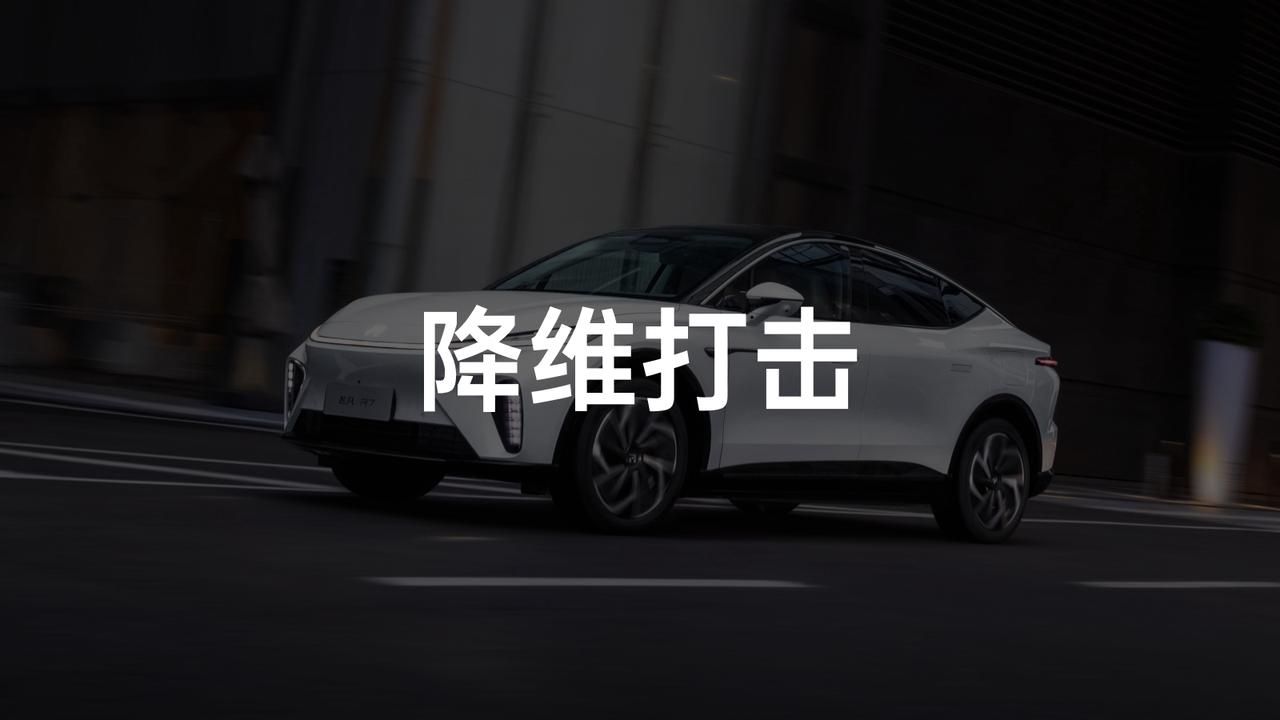The recent booming trend in the new energy market has been self-evident, especially in the price range around 200,000. All automobile companies are doing their best to roll up their sleeves, and consumers are dazzled by their choices. So which car is the most cost-effective choice? After a horizontal comparison of mainstream models in the 200,000 yuan range, the 2024 Rising R7, which was just launched at the Guangzhou Auto Show, stands out.
The refurbishment strategy of the 2024 Rising R7 is clear, focusing on the consumer’s concern on intelligence and comfort, and has made a total of 129 upgrades to maximize the experience of daily travel. As a mid-to-large pure electric SUV, the 2024 Rising R7’s starting price of 189,900 yuan directly enters the mid-size SUV price range, being a high-value low cost option for cars like Xpeng G6, Tesla Model Y, BYD Song PLUS EV, Song L, Buick E5, DEEPAL S7, LEAPMOTOR C11 and other pure electric as well as petrol competitors.
Space – Large Over Small
Space is a factor that almost all Chinese consumers will consider when buying a car, especially when it is the only car for the family. One would choose a spacious model in case of emergency. The new R7 has not changed in size, with dimensions of 4900/1925/1655 mm and a wheelbase of 2950 mm, it is a large SUV. Especially compared with competitors such as Xpeng G6 and Tesla Model Y, you can see that the new R7 has size advantages in any dimension.
As an SUV, the elegant fastback shape gives the new R7 a super low wind resistance performance of 0.238 Cd. However, some consumers may worry whether this fastback shape will affect the head space of the rear row? In fact, there is no need to worry about this. Thanks to the double-layer lying cell layout, the new R7 can achieve a minimum vertical height of 110 mm for the battery pack, plus a panoramic sunroof with a four-curvature dome design of 1.855 square meters, it can maximize the longitudinal space of the car.
Specifically, the vertical size of the driver’s seat in the front row can be adjusted to a minimum of 1064 mm, and the headspace for passengers in the rear row is also generous at 1020 mm, so even passengers who are 190 cm tall will not feel oppressed.
In addition to plentiful headroom, the new R7 also has one of the top front and rear row spaces among same-level production cars. A size of 964 mm allows passengers’ long legs to stretch out fully, and a rear seat cushion length of 470 mm also provides abundant support for the legs. Anyone who has sat in the back row during a long journey knows the pain, but there is no such trouble with the new R7.
Dynamics — Steady and Swift
Although driving is often overlooked as an inherent part of a vehicle, a car can’t merely sit there looking fine. Its drivability and comfort level directly affect daily use and mood. The new R7 has pleasantly surprised us in terms of dynamics.
Let’s start with the power. To give you the numbers, the new R7 has a maximum power output of 250 kW and peak torque of 450 N·m. It goes from 0 to 100 km/h in 5.8 seconds in official tests, which is better than the Xpeng G6 and Tesla Model Y. Its top speed is 200 km/h.
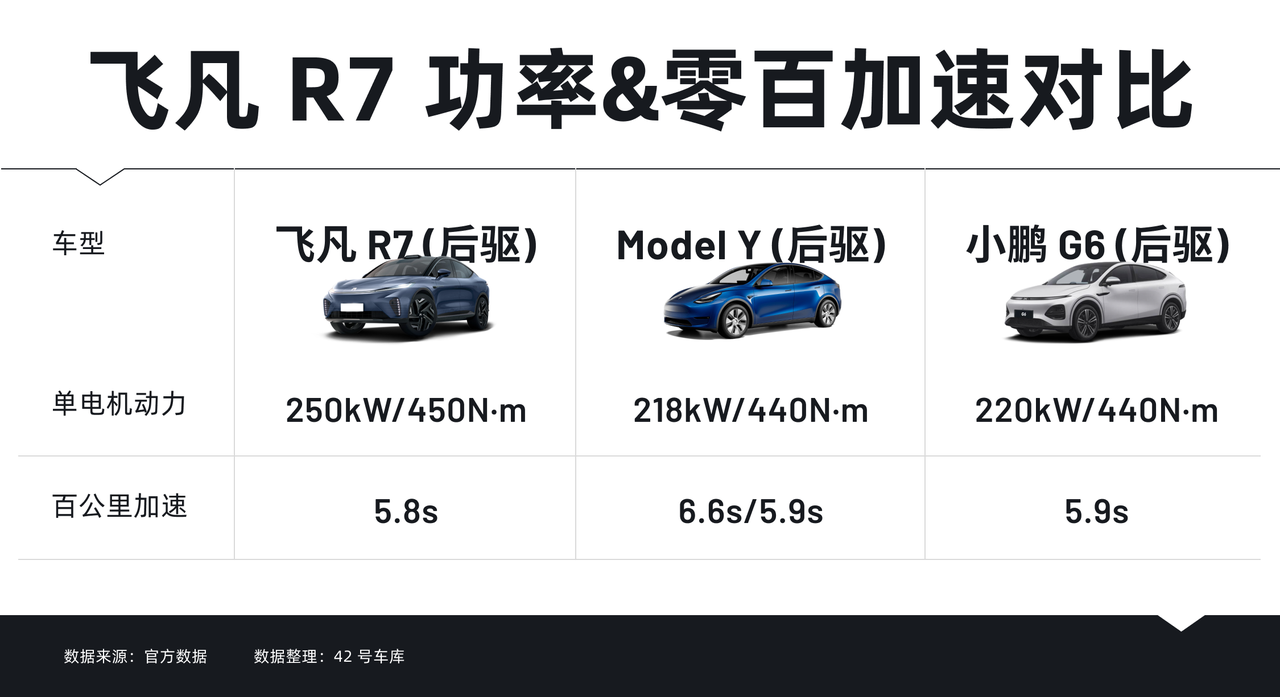
The motor of the new R7 uses direct waterfall oil cooling technology, resulting in a 30%-70% increase in heat dissipation capacity. This implies an extended peak power duration by two to three times, effectively ensuring you don’t worry about power decay. In official tests, the new R7 demonstrated no loss of power even after 50 consecutive sling starts. Additionally, the constant-to-peak power ratio of this motor has increased by 40%, indicating ample power reserves in the middle and later stages.
Power lays the foundation, but controlling it properly is a key determinant of drivability. Anyone who’s driven a pure electric model knows that motors can achieve maximum torque in a very short time. If the throttle isn’t tuned finely, the car can feel jumpy, so linear throttle tuning is crucial. In practice, the new R7’s throttle is exquisitely tuned, allowing a linear speed increase as you depress the pedal and a proportionate decrease in acceleration as the speed increases, leading to a more intuitive drive.

Apart from the throttle, brakes are another key factor in driving comfort. The new R7 comes standard with the Continental One-Box integrated electric braking system which, unlike traditional mechanical structures, uses a decoupled electric braking control system. Put simply, it utilizes precise electronic sensors and actuators to transmit electrical signals, enabling a pressure response within as fast as 150 ms. This is 0.3 s faster than traditional mechanical structures, which can make a key difference in avoiding dangers when necessary.
Driver comfort is only half the success; as a medium-large SUV, passenger comfort is equally important. The Flying Bay driving system onboard the new R7 includes upgraded optimizations for the suspension system, boosting body posture control. So, how does this show on the road?
First and foremost, improved cornering roll control. Most of us have driven those cars with extremely soft suspension tuning. When the speed is not high and road conditions are fine, the ride feels pretty comfortable. Yet, when encountering a corner or complicated road conditions, the suspension will fail to support the vehicle body, resulting in wallowing or significant roll. In actual experience, the new R7 has optimized suspension springs and shock absorber damping. It feels supple during daily driving, will manifest some roll during aggressive driving, but within tolerable limits.
Next up, pitch and lift. Many models boast of their impressive power and excellent brakes during promotions. But if the overall vehicle tuning can’t match these configurations, the pitch during acceleration and lift during braking would be quite noticeable. The new R7 mitigates this issue by optimizing acceleration and braking gradient, rendering a softer performance throughout the process of acceleration – maintaining speed – deceleration. The front-end dive, and rear-end squat felt by riders have been significantly reduced.

Beyond that, the new R7 also has a worthy feature to mention – crosswind compensation suppression function. Everyone must have had the experience of driving in heavy wind, especially during a typhoon or crossing a sea-spanning bridge. The strong crosswind requires constant steering adjustments to keep the car on track. The new R7 has a wind drag coefficient of 0.238 Cd and is the first in the industry to undergo lateral wind tunnel testing, thus achieving lateral aerodynamic optimization. Alongside, it can provide better driving stability by monitoring motor data in real time through a rotary variable sensor, offering torque compensation for crosswinds.
Cockpit – Comfortable Enjoyment
In the invisible dynamic aspect, the new R7 is enough, but where it can be seen, the new R7 also advances further in comfort.
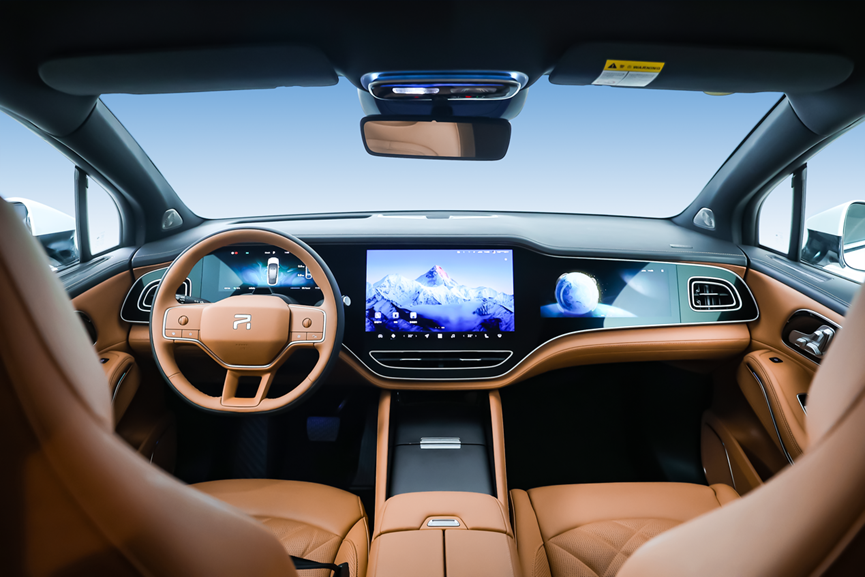
Firstly, the Rising Bach master steering wheel, this highly appreciated steering wheel from Rising F7 is now also used in the new R7. The use of NAPPA leather gives a fine touch to the entire steering wheel, and adopts a more user-friendly ergonomic design suitable for comfortable intelligent driving. The physical buttons and scroll wheel on the steering wheel allow for direct interaction and are very suitable for blind operation during driving.
Regarding the audio system, the new R7 brings Rising Bach immersive vector sound effect technology. Employing a dual-chip dual DSP solution on the hardware, it activates the Hexagon DSP module in the 8155 chip, paired with the ADI DSP audio processing chip. In terms of experience, the new R7 supports a 5.1/7.1 sound system with 14 channels, combined with the support of audio brand Dirac, providing the audio with a layered auditory effect. Verbal descriptions fall short in expressing this, thus, it would be better for everyone to experience it firsthand at the 4S store.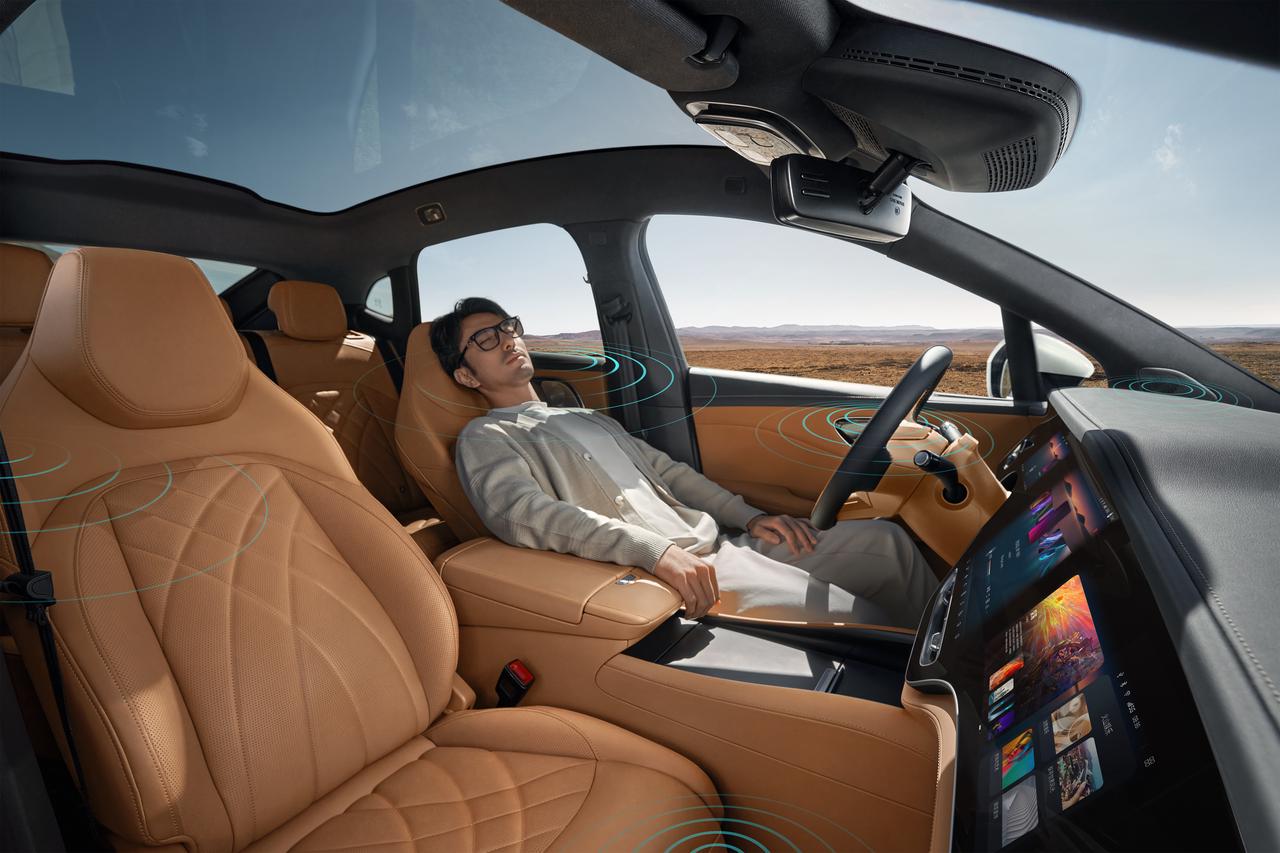
Concerning the audio, the new R7 has an interesting feature: it offers a fully immersive stereo sound perception. For instance, when the navigation announces a left or right turn, the sound in the new R7 shifts correspondingly, enhancing your intuitive understanding.
Creating a comfortable cabin also requires addressing the NVH issues. To give you some figures, the interior noise of the new R7 reaches 55.7 decibels at the speed of 60 km/h, demonstrating excellent cabin insulation.
In order to achieve superior sound insulation, the new R7 employs eight measures to mitigate noise and vibration. These include designing the vehicle’s shape based on aerodynamics and conducting nearly 1,000 simulation analyses as well as 4-wheel, 120-hour wind tunnel tests to reduce the wind resistance to an absolute minimum of 0.238 Cd. Not only does this improve the vehicle’s range, but it also noticeably reduces wind noise.
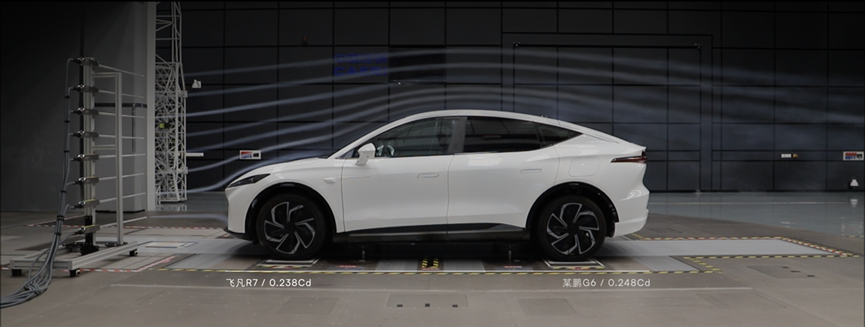
Another essential part of noise reduction involves hardware insulation. The new R7 has improved the sense of serenity through EDU suspension hardness adjustment and an optimized body sealing strip and material combination. Additionally, the windows of the new R7 use 6 mm double-layer laminated sound-insulation glass, and the windshield uses 5.36 mm double-layer laminated glass for noise reduction, significantly improving the sound insulation.
The new R7 also spares no effort in refining the quality of interior features. Features including four-door electric suction, fully functional SPA seats, streaming rearview mirror, NAPPA leather seats, heated, ventilated, and massaging front seats, 8-way power-adjustable driver’s seat with 4-way lumbar support, 6-way power-adjustable passenger’s seat with 4-way lumbar support and electric leg rest, 360° panoramic imaging, 256-color linear ambient lighting, and 1.855 m² integrated dome-style glass. Below you can clearly see the advantage of the new R7 over competitors in terms of equipment. The construction of interior atmosphere begins with configuration and ends with quality.

Another noteworthy highlight is the exclusive co-driver mode offered in the new R7. Besides the abovementioned hardware configurations, the one-click starting Rising Exclusive Mode can not only recline the seat but also synchronize it with ambient lighting and music, creating an intimately comfortable space. Being in the co-driver’s seat guarantees total relaxation.
Interaction —— Intelligent Peace of Mind
Choosing an all-electric vehicle today means expecting comfort, power, space and, very likely, performance in intelligent interaction between the vehicle and the users.
The new R7 employs a 3+1 super visual intelligent interactive solution, where 3 represents a wide 43-inch tri-screen, and 1 corresponds to a 70-inch Huawei vision-enhanced AR-HUD heads-up display system. This integrated interactive system is quite rare in the industry.

Let’s talk about this Huawei vision-enhanced AR-HUD heads-up system. Currently, mainstream vehicles are equipped with HUD features. However, most are the traditional W-HUD, which has certain limitations compared to the feature-rich and visually superior AR-HUD.
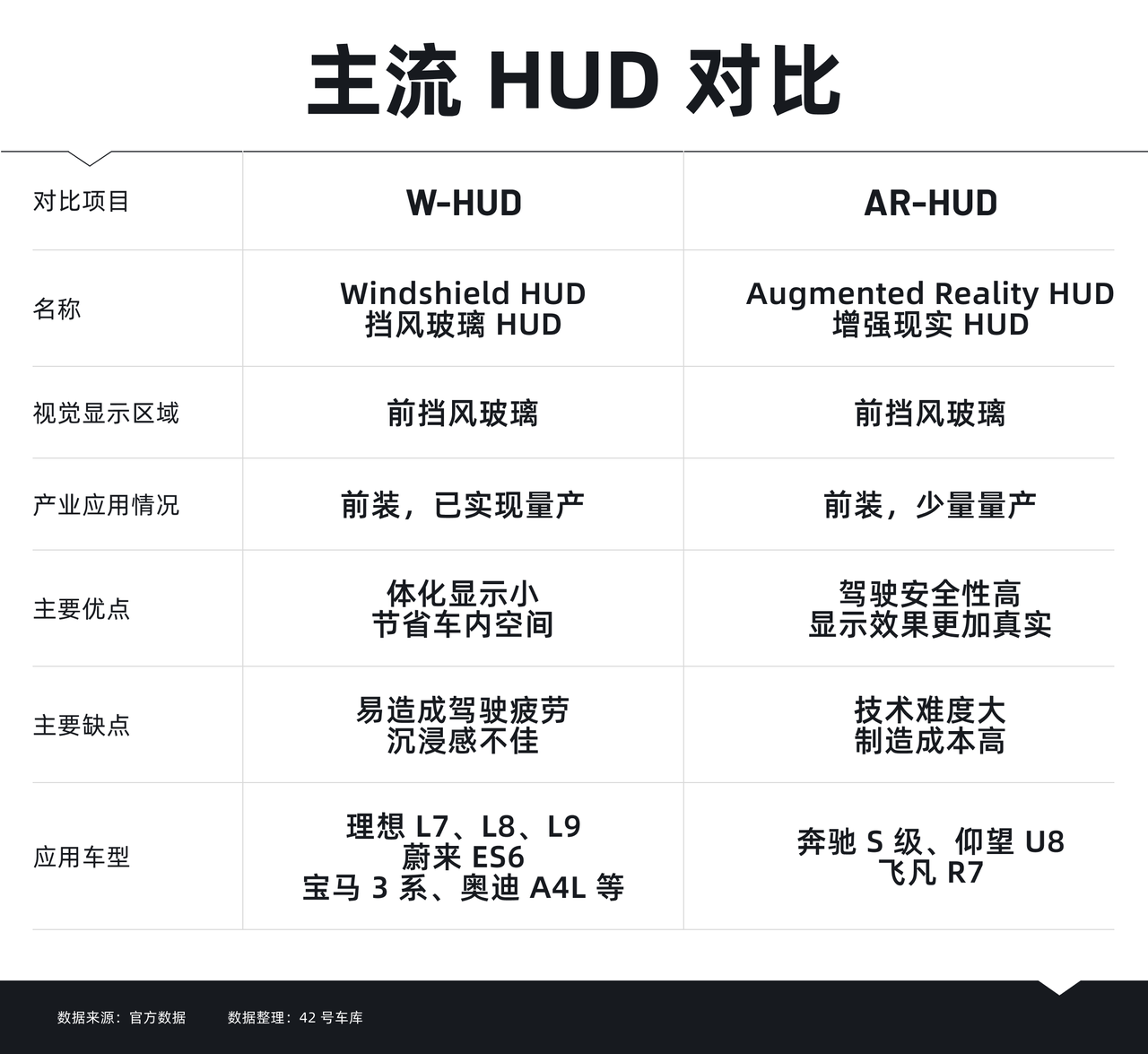
In summary, the AR-HUD heads-up system on the new R7 is bigger and clearer.
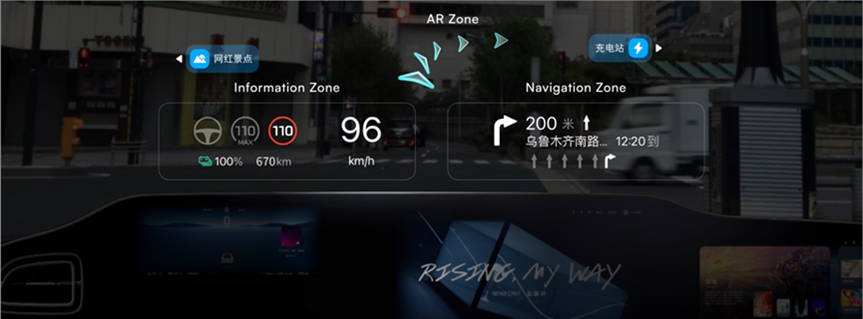
How should we understand this? Imagine this scenario: early in the morning, you head out with the new R7 model. Once you set the navigation destination, all navigation information will be displayed on the 70-inch AR-HUD in front of you as you hit the road.

Traffic will be heavy during the morning peak hours. The AR-HUD system will display crucial information like close-proximity vehicles, pedestrians, and obstacles ahead, using color-coding for different levels of danger.
At the next intersection, you will need to exit into a forked ramp. The AR-HUD uses fishbone arrow icons to precisely guide you towards the correct ramp.
Exiting the ramp and about to enter a tunnel, the AR-HUD smartly adjusts its brightness to ensure visibility is maintained even in low-light conditions.
Exiting the tunnel, the AR-HUD informs you about your favorite breakfast joint nearby. You park the car, place your order and wait. The waiting times can be long, so you start watching your favorite TV show projected right on the AR-HUD screen. Its 2K resolution and 1,200:1 contrast ratio make it perfect for movie watching.
Momentarily, your breakfast arrives, and you can head straight to work.
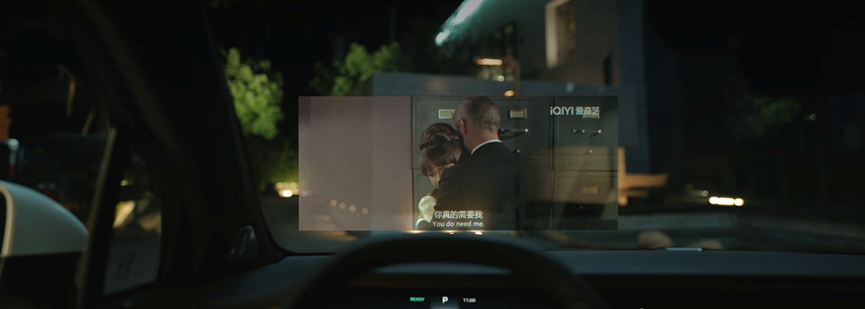 I’m not sure if this is the dream commute scene for many of you. True technology is such that you barely notice its existence. This Huawei-enriched AR-HUD Perspective system can genuinely integrate into your life.
I’m not sure if this is the dream commute scene for many of you. True technology is such that you barely notice its existence. This Huawei-enriched AR-HUD Perspective system can genuinely integrate into your life.
I’d also like to mention the Rising PILOT all-fusion smart driving system from Rising. Bolstered by the PREMIUM 4D imaging radar, an 8 million pixel camera and the Nvidia Orin X chip, the hardware capabilities of the new R7 leave no space for concerns. On the experiential level, the new R7 leverages the Full Fusion all-fusion algorithm system, the distinctive feature of which is an excellent scenario-oriented experience.
Firstly, its recognition ability in complex scenarios is impressive. For example, during rush hour periods, traffic conditions can be highly complex. Whether the car in front suddenly hits the brakes or cuts in abruptly, the new R7 can correctly identify such situations. Also, generally, there are many electric bikes and bicycles on the road – the new R7 can accurately identify these relatively smaller entities, bypassing many risks. After you enter the parking lot, objects with high identification difficulty, such as traffic cones and speed bumps, can be identified by the system.
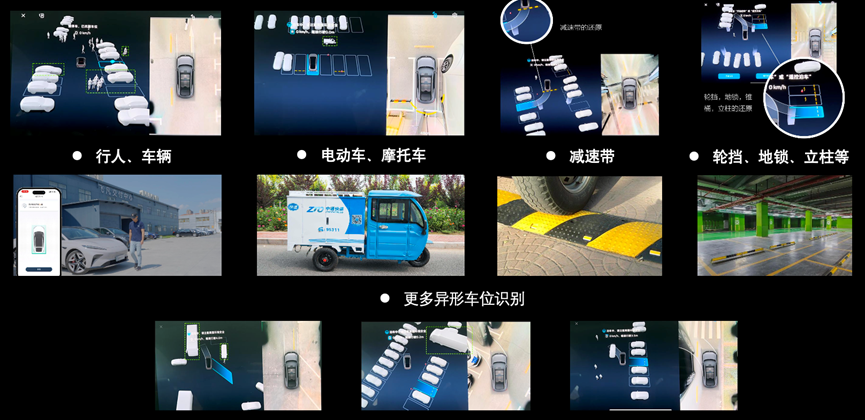
In terms of navigation assist, the experience offered by Rising PILOT is equally exceptional. Particularly concerning lane changing and entry and exit ramp capabilities, which draw a lot of attention, our empirical tests have shown that this smart driving system can flexibly determine the timing of the main road based on traffic, featuring bold game logic and selected overtaking of slow vehicles. While in the ramp, the speed can be controlled at 60 km/h, with no complaints about posture or correction. The driver needn’t worry—after the turn, the acceleration will be linear.
Lastly, regarding the in-vehicle system many of you are concerned about, supported by the RISING OS 1.4.0 interactive system, the 43-inch wide three-screen display of the R7 is independently yet cooperatively operative. For instance, the entertainment sharing feature of the new R7 allows the central control screen and the co-driver screen to share videos through a three-finger dragging motion, and can independently connect to Bluetooth headsets without interference. After setting up navigation, the co-driver screen can sync with one click to the dashboard screen, the central control screen, and the AR-HUD. Although the overall configuration is high-end, the cabin software experience still has room for optimization, so stay tuned for subsequent OTA upgrades.

Returning to our initial discussion – why is the new R7 the most cost-effective pure electric SUV in the 200,000 yuan range? You should all have an answer by now. To sum up, the new R7 has the ‘5 Bests’ at its rate: Largest body size, peak motor power of 250 kW, fastest two-wheel drive 0-100 km/h acceleration in 5.8s, lowest 0.238 Cd body drag coefficient, and exclusively equipped with Huawei’s AR-HUD.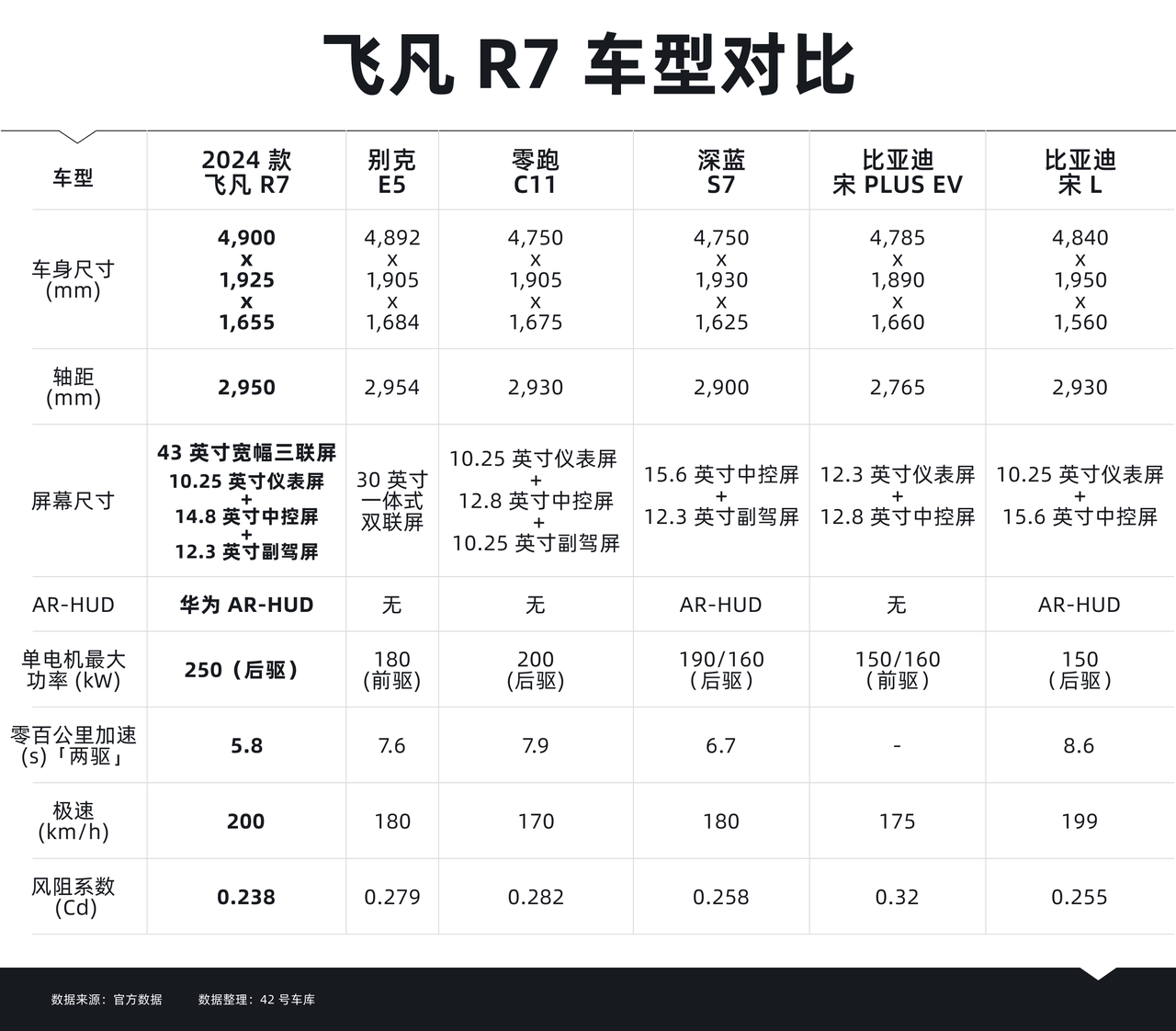
Final Remarks
The astonishing price range of 189,900 – 229,900 yuan already comes with 7 time-limited benefits for the new edition R7. These include a free comfort upgrade for the Rising Bach cabin valued at 10,000 yuan; a free upgrade to 21-inch Stellux hub valued at 5,000 yuan; a discount on the Super Vision smart interaction package worth 10,000 yuan, which includes Huawei’s visual enhancement AR-HUD flat vision system and streaming rear-view mirror, available for a limited time only at 2,000 yuan; a lifetime free use of the RISING PILOT’s fully integrated high-end smart driving system software package worth 30,000 yuan; and 3 years of free RISING OS cabin system interaction traffic, etc., with the time-limited rights ending on December 31, 2023.
With a price of less than 200,000 yuan and its product strength and configurations surpassing competitors, coupled with generous car-buying benefits, the new R7 is unquestionably the top value-for-money choice among pure electric and fuel car models at the same price point. If you are planning on purchasing a car recently, we suggest experiencing it offline to feel the strength of the new R7 first-hand.
This article is a translation by AI of a Chinese report from 42HOW. If you have any questions about it, please email bd@42how.com.
